Gravity Assist Podcast: The Sun, with Nicky Fox
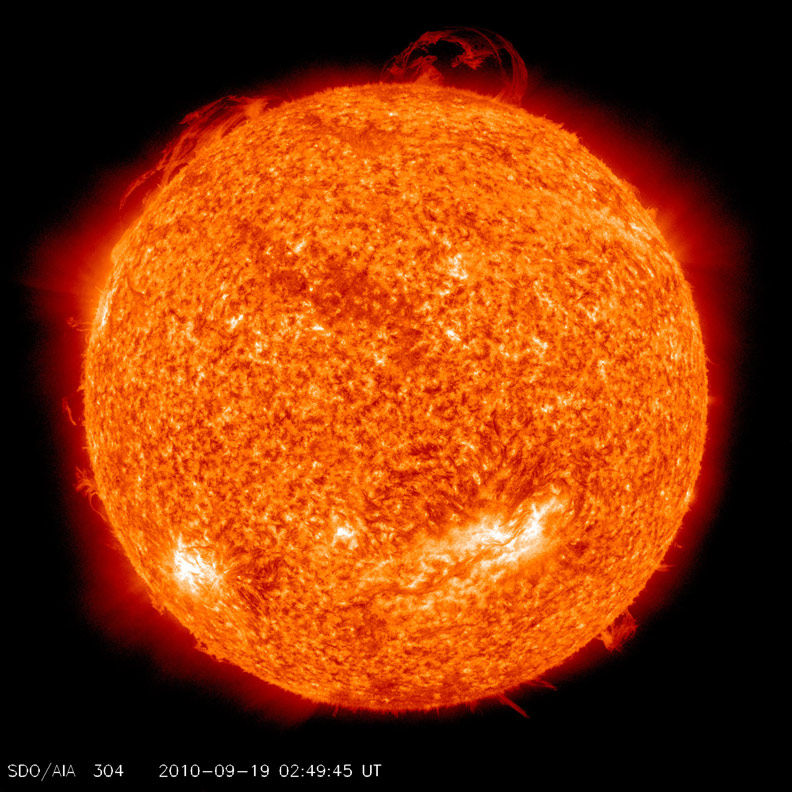
The Gravity Assist Podcast is hosted by NASA's Director of Planetary Science, Jim Green, who each week talks to some of the greatest planetary scientists on the planet, giving a guided tour through the Solar System and beyond in the process. This week, he's joined by Nicky Fox of the Johns Hopkins University Applied Physics Laboratory to talk about our nearest star, the Sun. Fox and Green discuss solar flares and space weather, as well as NASA's upcoming Parker Solar Probe, on which Fox is Project Scientist, and which is a mission to "touch the Sun."
You can listen to the full podcast here, or read the transcript below.
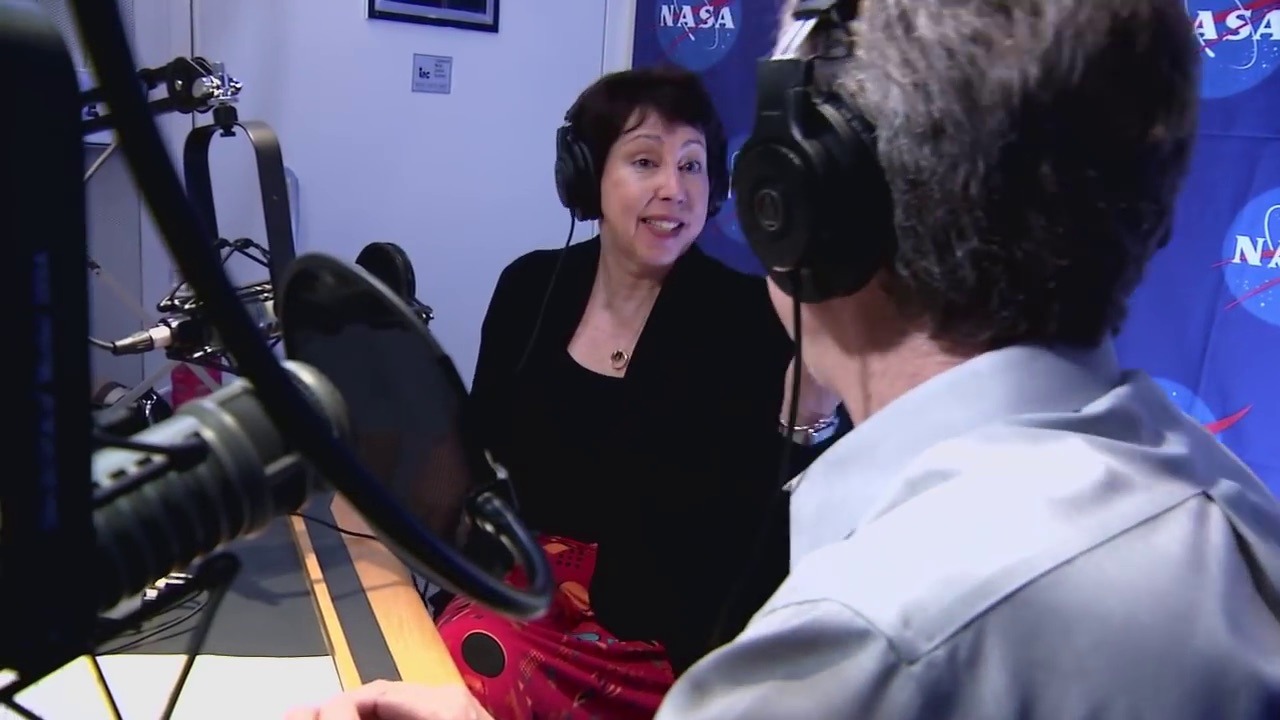
Jim Green: Nicky, what do we know about the Sun? [So Hot, It's Cool: Record-Breaking Sun Probe Nearly Ready for Launch]
Nicky Fox: The Sun, of course, is in the center of our Solar System. It provides light and heat to us here on Earth. But of course, even though it's the most important thing to us, the Sun is just a very average, very basic star. And so it works just like any other star. In the center, there is a core that is kind of a roiling mass of gas very much like a nuclear furnace and nuclear reactions occur there. Hydrogen combines to make helium, etc., just like you would have in a nuclear reactor. And as that heat moves out towards the surface of the Sun, it gradually cools. So the core of the Sun is about 15 million degrees Celsius (27 million degrees Fahrenheit). By the time we get to the visible surface, it's cooled to about 5,500 degrees Celsius (10,000 degrees Fahrenheit). From there, the atmosphere of the Sun lifts off and moves away from the Sun and bathes all of the planets. So we here on Earth actually live in the atmosphere of the Sun.
Jim Green: The analogy I use for that is that it's like the Sun is exhaling in all directions.
Nicky Fox: It absolutely is, and as it exhales, sometimes it sneezes. And when the Sun sneezes, the Earth catches a cold.
Jim Green: So let's talk about some of those sneezes. We call them space weather events, and the Sun can be really violent at times.
Get the Space.com Newsletter
Breaking space news, the latest updates on rocket launches, skywatching events and more!
Nicky Fox: The Sun can indeed be very violent, and one of the ways to measure the activity on the Sun is to count sunspots. Not that you should ever look at the Sun with your naked eye, but you can pull up a web browser and look at the spectacular images from the Solar Dynamics Observatory. If you look at sunspots in ultraviolet light, they suddenly become very bright, very active spots. The more spots there are, the more active the Sun is, and that's how we characterize the solar cycle: when there is the fewest number of spots we are at solar minimum, and when it has the most number of spots it is at solar maximum. It takes about 11 years for a full solar cycle. During those 11 years, we see all kinds of different stuff coming from our Sun.

As you mentioned, there are these very intense events that we call coronal mass ejections, literally a mass of coronal material ejected fast from the Sun. When we see a flare, it's followed by very high-energy particles. They travel at about half the speed of light and they can cause issues for astronauts, which is why on the International Space Station we make sure that the crew area is very well-protected. NASA watches for any big solar events before they allow spacewalks. Then particles can also smash into solar panels and cause damage to spacecraft. But behind the particles comes the main event, the big blob of plasma.
When that enters our atmosphere, it powers the beautiful aurora, and that's a gorgeous, gorgeous effect. When the Sun is exhaling and it puts all that material out, as the material is accelerated, it grabs the solar magnetic field with it and it carries it out towards the Earth. Just as you remember from high school, like poles repel, opposite poles attract. If the magnetic field in the solar wind is pointing in the opposite direction to the Earth's magnetic field, they will attract and connect and they will let all of that solar plasma come into our atmosphere. We call this process magnetic reconnection, and when that happens all of these energetic particles come streaming down the magnetic fields and they impact our atmosphere.
Earth's atmosphere is predominantly nitrogen and oxygen. When it gets struck by these really high-energy particles, the molecules and atoms in our own atmosphere are excited, causing them to glow. That glow is what we see as the aurora.
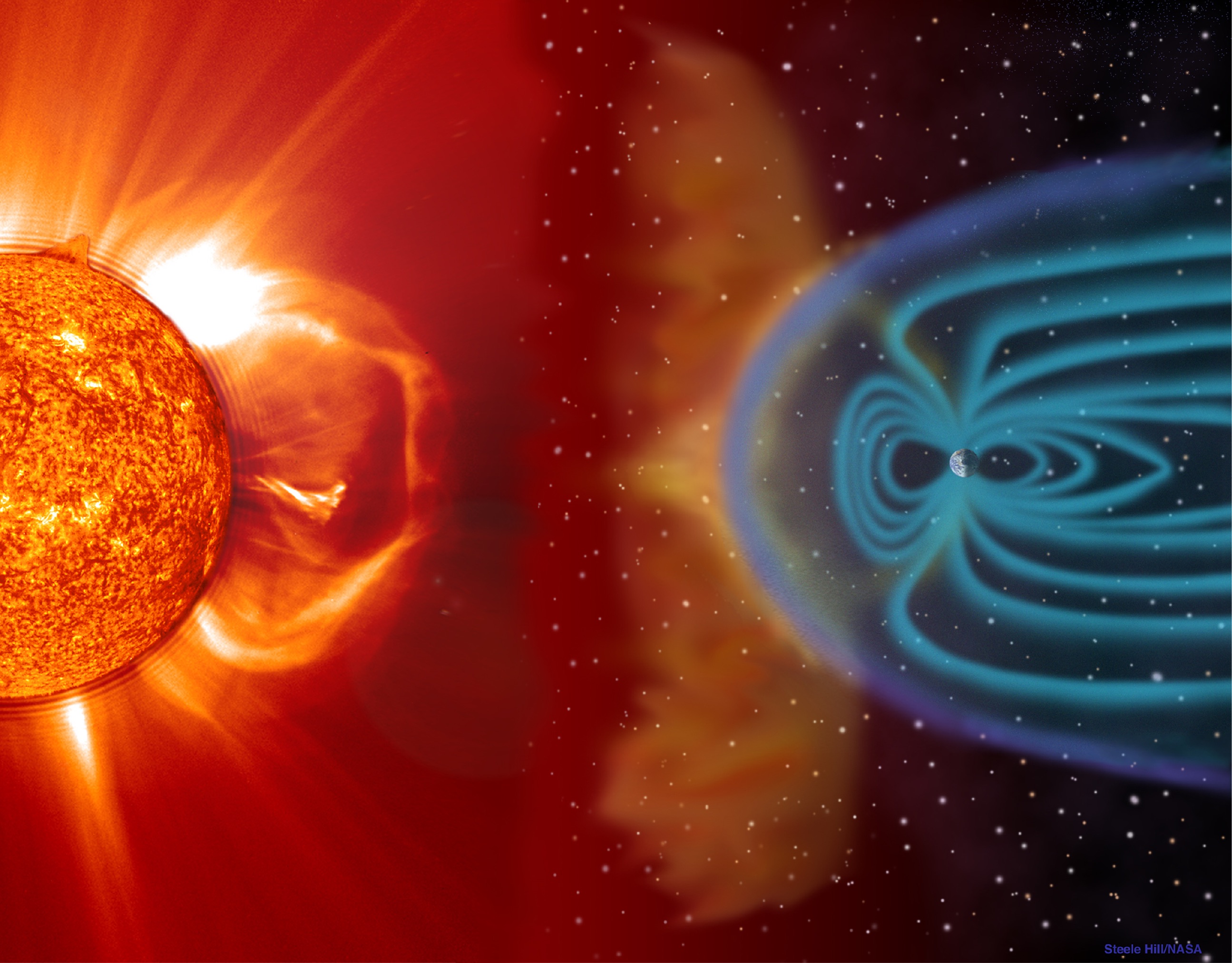
The aurora is basically a big current in the sky and a current always needs somewhere to close, and the ground is not conducting, so the particles will look for long structures that they can flow through, like a power grid, or undersea pipelines, or any kind of long, straight conducting surface. They can cause catastrophic power outages like we saw in 1989 when the Hydro-Québec system went down, leaving six million people without power. It also pumps up our radiation belts where the Van Allen probes are working and taking data, causing issues for spacecraft. It can also cause the atmosphere to become much more dense, slowing down spacecraft and changing its orbit, which has to be mitigated. It causes problems for GPS, causing outages or inaccuracies, and we rely on our GPS to get us everywhere, every day. So we really do rely on technology, and technology is very much affected by the Sun.[Proton Fusion, the Sun's Power Source, Explained (Infographic)]
Jim Green: There's another phenomenon on the Sun not like a coronal mass ejection, but equally important, and that is solar flares.
Nicky Fox: They often occur right before a coronal mass ejection leaves the Sun. The Sun has a magnetic field very similar to the Earth, but it's a lot more complex. These little magnetic loops can pop out, and if you look at a really nice Solar Dynamics Observatory image, you can often see these long loops of illumination. As the loops become stretched like an elastic band at some point they will break. When an elastic band snaps, you always feel pain in your hand, and that pain is actually the heat coming from the band into your fingers. So as you stretch the Sun's magnetic field lines, they become more and more energetic. You're putting more into it. At some point, they will burst and let off a whole bunch of energy in all kinds of different forms, and one of them is visible light, and that's when we see a flare.
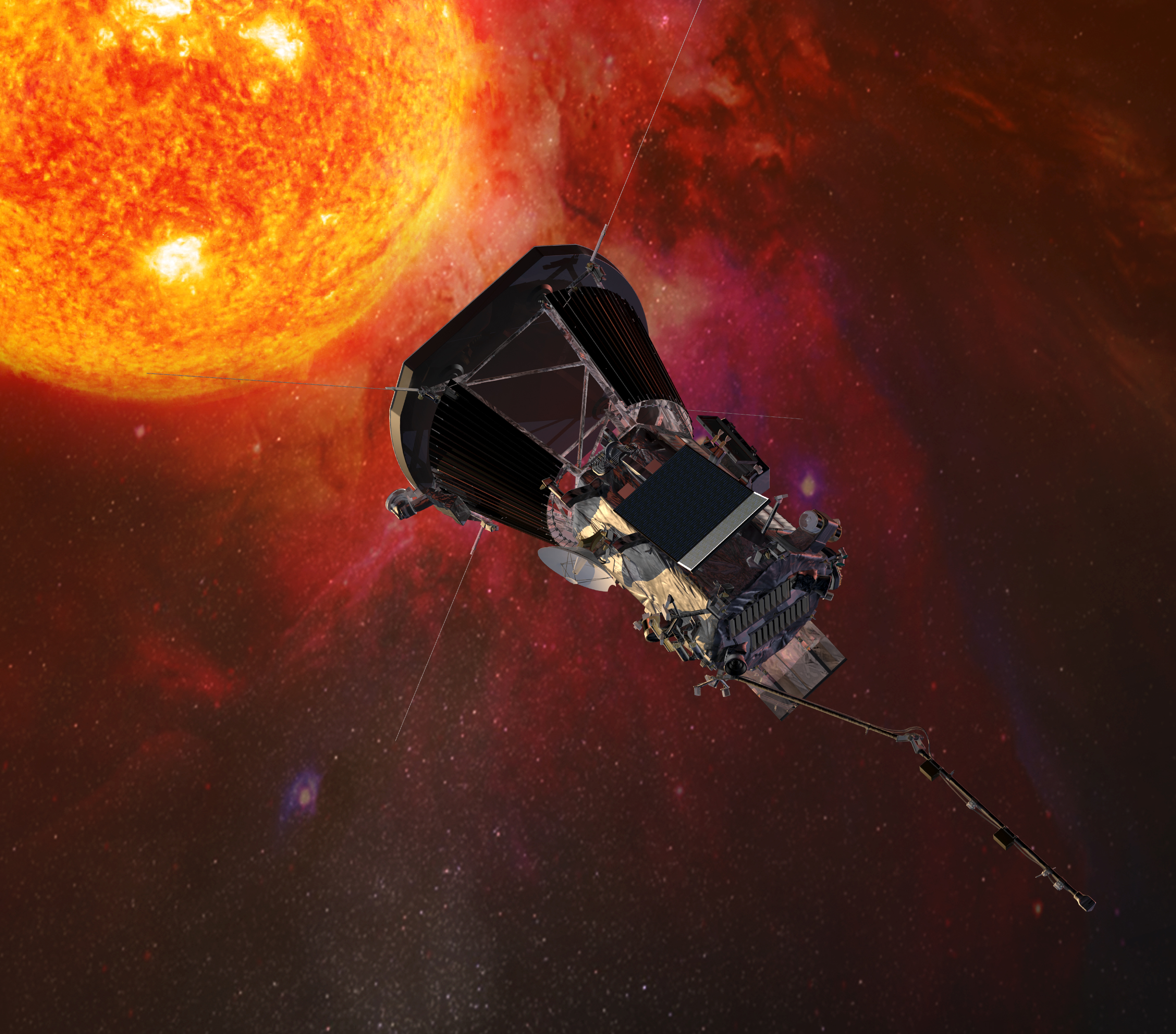
Jim Green: The study of the Sun has all been very remote, and we've really got to go there and make some measurements where some of this action happens. You're involved in a fabulous mission called the Parker Solar Probe that is going to try and do that. Can you tell us a little bit about it?
Nicky Fox: The Parker Solar Probe is the coolest, hottest mission under the Sun. We're going to go and visit this area where all of the magic [on the Sun] happens. Everything happens in that hazy atmosphere around the Sun that we call the corona. In that atmosphere we have two mysteries. One, is that that material in the corona is about 300 times hotter than the visible surface of the Sun, with temperatures around three million degrees Celsius, and yet the surface is about 5,500 degrees Celsius. It's a big mystery. If you walk away from a campfire, you get colder, not hotter. But if you walk away from the Sun, you would suddenly move into a much hotter region. Where this big rise in temperature happens, the plasma becomes so energized that it can actually break away from the huge gravitational hold of the Sun and form the solar wind that bathes all of the planets.
So that is the second mystery: why is the solar wind born there and why is it accelerated so much? That's kind of the final piece of the puzzle and going there and visiting is the key. For the very first time, Parker Solar Probe will journey into the Sun's corona and take those key, missing, in situ measurements.
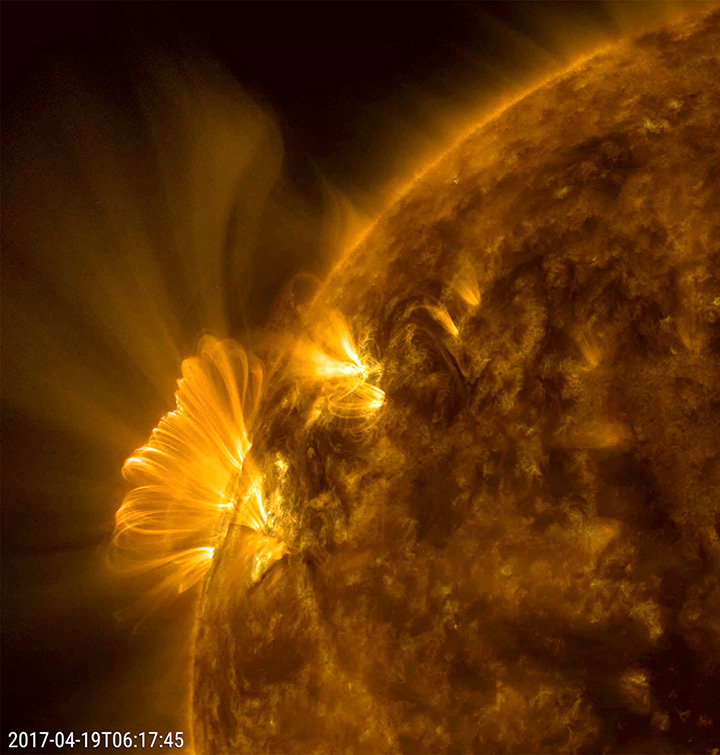
Jim Green: When it's launched, it's not going to fly directly to the Sun, but is going to make some encounters with some of the planets. What's the plan?
Nicky Fox: Our launch window opens on 31 July 2018. We launch out of Cape Canaveral, and our first encounter is with the planet Venus. We're moving so fast when we launch that it will take us just six weeks to get to Venus, where we will get our first gravity assist. Now Jim, I know that you're used to missions using gravity assists to speed up. New Horizons went to Jupiter, shot around there and came out much faster. But Parker Solar Probe is not using Venus to speed up, we are actually using Venus to trim our orbit very slightly and very carefully to allow us to move around the Sun in very big petal-shaped orbits. We actually encounter Venus seven times during our seven-year mission, and each time, we trim our orbit just a little bit to allow us to gradually come closer and closer to the Sun until, in our final orbital configuration we are just under 6.4 million kilometers (four million miles) away from the Sun's surface. I realize that when I say four million miles, that doesn't sound particularly close, but if you put the Earth and the Sun one meter apart, Parker Solar Probe will be four centimeters from the solar surface, and that is close.
Jim Green: We ended Cassini by having it plow into the atmosphere of Saturn. Is the plan that Parker Solar Probe will end by plowing into the Sun?
Nicky Fox: I hate that question. I really do. It's such a sad end for us. Our prime mission is seven years long. After that, the final orbit is totally stable, so we can stay in that orbit and continue taking science as long as we still have fuel on the spacecraft. We use the momentum wheels to keep our spacecraft oriented so our wonderful heat shield remains between us and the Sun at all times. However, these wheels do need to be de-spun. Every now and again, we do need to fire thrusters. So at some point we will run out of fuel and we won't be able to keep that heat shield where it needs to be. At that point, the spacecraft will start to turn. That means the Sun is now hitting parts of the spacecraft that are not designed to have the Sun on them, so the spacecraft at that point will start to break up and eventually will join the dust cloud around the Sun. That will be a very sad day.
Jim Green: Yes, it will be. So many people work on our missions and really devote a significant part of their career to make them happen.
Nicky Fox: People have devoted decades and decades of work to Parker Solar Probe, because Parker was first proposed in 1958, around the time that Gene Parker put out his seminal paper postulating about what was happening around the Sun. He in fact named the solar wind. Since 1958 it's been the highest priority mission in many decadal surveys and many NASA roadmaps, and it's taken us nearly 60 years to finally have the technology available to really make our dreams come true.

Jim Green: Last year we had a total solar eclipse in the United States and maybe as many as 85 percent of the entire U.S. population had an opportunity to see it. Solar eclipses give us the chance to see the corona with our own eyes. Where were you for the eclipse?
Nicky Fox: It was actually my first solar eclipse, and I was in Beatrice National Park in Nebraska with about 10,000 people supporting a NASA event. I'd brought my friends and family with me, but it was cloudy and, in fact, after the beginning of the eclipse it even started to rain. We were very, very lucky that right at totality, the clouds parted and we actually saw the most amazing corona, the most fantastic diamond ring. It was a truly spectacular, truly momentous occasion. Not only that, I actually could see the part of the sky where Parker Solar Probe will be working, so it was very exciting.
Jim Green: As the Sun's magnetic field is moving out with the solar wind, it has to stop at some point. Do we know where?
Nicky Fox: We do know that the solar wind's influence has a finite boundary. We call it the interstellar boundary. The Voyager 1 spacecraft crossed that boundary and is now out in interstellar space.
We continue to learn more and more about the boundary, particularly with our IBEX (Interstellar Boundary Explorer) spacecraft that has actually managed to image the heliopause, which is the name given to the final boundary before interstellar space. IBEX found a ribbon structure along the boundary and has actually promoted a new mission to be proposed in the decadal survey called IMAP (Interstellar Mapping Probe), which is going to take those observations to the next stage. With IBEX, we've found all the questions we want to answer, and with IMAP we'll bring answers to those questions.
Jim Green: It was thought at one time that the heliopause, like the Earth's magnetosphere, had a very blunt front end in the direction that the Sun is moving around the center of our Galaxy, and then a long tail in the trailing direction. But some recent observations, particularly those from an instrument on Cassini, have indicated that it's a little different from that. What have we found?
Nicky Fox: The boundary is not a fixed boundary as we first thought it was, but it's changing in time. It's moving in and out and we think it's related to the solar cycle, as the Sun's influence changes with the solar cycle. As the Sun changes, everything feels an effect, even the boundary with interstellar space.
Jim Green: I always ask my guests, what was your gravity assist that really propelled you into this field and kept you going?
Nicky Fox: My gravity assist happened at a very early age, and it was my dad, because he was fascinated by everything NASA, everything space. Instead of bedtime stories, I would get how the Sun was in the center of the Solar System and the Earth went around the Sun and the Moon went around the Earth. He followed every single thing that NASA did and absolutely loved it, and instilled in me the idea that the best possible thing I could do would be to work for NASA. As a girl in England where you don't think that really is possible, it was still this magical thought that stayed with me that. Then I went to college and I did space plasma physics, and then a very good friend of mine, Dr Jim Slavin, came up to me and asked if I'd be interested in a job at NASA. And that was probably my final gravity assist.
This story was provided by Astrobiology Magazine, a web-based publication sponsored by the NASA astrobiology program. This version of the story published on Space.com. Follow us @Spacedotcom, Facebook or Google+.
Join our Space Forums to keep talking space on the latest missions, night sky and more! And if you have a news tip, correction or comment, let us know at: community@space.com.

The National Aeronautics and Space Administration (NASA) is the U.S. government agency in charge of the civilian space program as well as aeronautics and aerospace research. Founded in 1958, NASA is a civilian space agency aimed at exploring the universe with space telescopes, satellites, robotic spacecraft, astronauts and more. The space agency has 10 major centers based across the U.S. and launches robotic and crewed missions from the Kennedy Space Center in Cape Canaveral Florida. Its astronaut corps is based at the Johnson Space Center in Houston. To follow NASA's latest mission, follow the space agency on Twitter or any other social channel, visit: nasa.gov.










